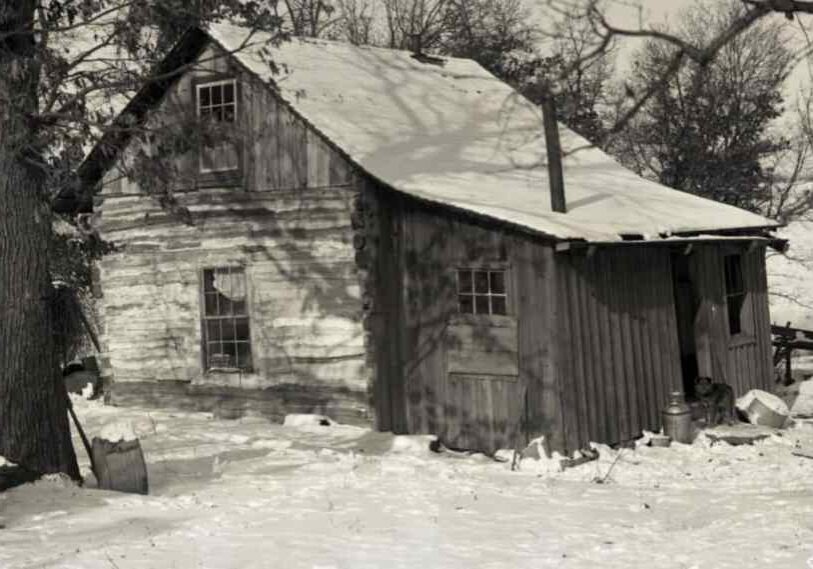Farm data a ‘wake-up call’ for SE Minnesota and surrounding states’ farmers
Ag report shows fewer, larger Midwest farms with loss in total acreage under production, and Minnesota is no exception

MIDWEST AMERICA — Zemua Baptista had dreamed his whole life of becoming a farmer. In late 2019, while still in college, he was able to get a contract and a beginning farmer loan to build eight chicken houses to raise broiler chickens. Eventually, this first-generation Nebraska farmer’s birds are sold as rotisserie chickens at Costco stores.
Now, he keeps his eye on land opportunities, but he hasn’t been able to purchase any more than the 80 acres he already farms.
New data from the USDA’s Census of Agriculture shows that farmers such as Baptista are becoming more and more rare.
“There are just not a lot of young people in the industry. It’s just not that common,” he said, noting that it was an uphill battle to get started.
More than nine out of 10 producers in the country describe themselves as white, a trend that is also reflected in the Midwestern states, where only 2% of producers are people of color. For example, the latest data show Baptista is one of just 14 Black farmers in Nebraska.

Zemua Baptista stands outside his chicken barns near Seward, Nebraska in 2020. A first-generation Black American, Baptista is a new young face in Midwest production agriculture. (Photo by Chris Clayton, DTN/The Progressive Farmer)
There are other alarming trends in the upper Mississippi River basin, one of the most intensive agricultural areas in the country: More and more farms are going out of business, and farmland is being consolidated, making it even more difficult to get into the industry.
Declining number of farmers
The Midwest, which encompasses six of the nation’s top 10 most agriculture-intensive states — including Minnesota — witnessed more than a 4% decline in the number of farms since 2017…that’s more than 30,000 farms.
As Agriculture Secretary Tom Vilsack delivered remarks on the findings, which come out every five years, he emphasized his main findings: the number of American farms and farmers continues to decline — a fact, he argued, that carries broad implications beyond agriculture.
“I’m concerned about the state of agriculture and food production in this country,” Vilsack said. “This survey is a wake-up call.”
Missouri, for example, grappled with an 8% decrease, or 7,433 farms. Ben Brown, senior research associate and agricultural economist at the University of Missouri Food and Agricultural Policy Research Institute, said consolidation — big farms continued getting bigger in 2022 — means the state is losing mid-sized farms.
“We’ve been in this farm consolidation period for decades. Farmers are producing more and more goods…because fixed costs require farms to get big,” Brown said. He added, “Some farms are just looking to break even in 2024.”
Contrary to the prevailing trend, Iowa stood out. It was the only Midwestern state to not have a reduction in farms. It added about 800.

The Midwest, which has six of the nation’s top 10 most agriculture-intensive states, saw more than a 4 percent decline in number of farms since 2017.
Consolidation of farmland
Nationwide, fewer, larger farms are now operating on less farmland than they were in 2017, the data show. Farmland nationwide decreased by 2% — about 880 million acres. At the same time, the average farm size increased by 5%.
An Investigate Midwest analysis of census data found Wisconsin was hit particularly hard, suffering a nearly 4% decline in farmland, equivalent to 533,952 acres. It also lost roughly one in 10 farms and nearly one in three dairy farms between 2017 and 2022.
It’s not a new trend for the state, which once built an identity around dairy. More recent state data show more than 500 additional dairies have shuttered since the census was taken, putting Wisconsin at 5,644 dairy farms as of Feb. 1, down from about 9,000 in 2017.
Notably, the number of milk cows in the state had declined less than 2% between 2017 and 2022, suggesting existing dairies are expanding.
Some felt bullish about Wisconsin’s agricultural future despite the losses, pointing to its spot as 10th in the country for market value of products totaling $16.7 billion. The state’s diversity of products, including vegetables, berries and herbs, help smaller producers add to a diverse marketplace, said Jason Mugnaini, executive director of governmental relations for the Wisconsin Farm Bureau Federation.

A cow looks out from its stall at a dairy farm in Cochrane, Wisconsin. Wisconsin lost roughly one in three dairy farms between 2017 and 2022. (Photo by Coburn Dukehart, Wisconsin Watch)
Others contended that fewer farms on the landscape can have harmful ripple effects.
Julie Keown-Bomar, executive director of the Wisconsin Farmers Union, said the loss of farms and farmers makes it harder for rural communities to survive. Policymakers must help small and medium-sized farms stay viable, she said.
“It’s a choice we’re making about what kind of farm systems and food systems we want,” she said. “It’s not inevitable that we have to continue in this direction.”
Amanda Starbuck, research director for Food & Water Watch, an anti-corporate farming advocacy group, said she expected the 2022 Ag Census to show consolidation of livestock farming. But the change was more pronounced than she anticipated. “I was surprised at how much more losses we’ve seen within the dairy industry at the national level,” she said.
In Iowa, there were 500 more hogs per farm, on average, in 2022 than in 2017, census data show. Raising more animals on fewer farms can have wide-ranging implications — such as disposing of larger amounts of manure in a smaller geographic area, Starbuck said.
Livestock operations across the United States produced 940 billion pounds of manure in 2022, which was 52 billion pounds more than in 2017, Food & Water Watch reported. To get these numbers, the group used the livestock data reported in the 2022 census and multiplied by estimates of annual manure production by those types of animals.
“They produce more manure than can be sustainably recycled on nearby land,” Starbuck said. “That’s why you have problems with water contamination.” (Root River Current‘s coverage of contaminated drinking water concerns in southeast Minnesota can be found on our Land & Water page.)
Declining diversity
Farmers are typically older, white and male — and that hasn’t really changed, according to the census data. However, some questioned whether the numbers were entirely accurate.
For instance, Iowa recorded a 10% increase in male producers. The number of non-white farmers in the state increased overall, but the data showed fewer Black farmers.

Farmers are typically older, white and male, with the older generation owning two-thirds of Iowa land.
Shaffer Ridgeway, a district conservationist with the Natural Resources Conservation Service in northeast Iowa, said he thinks some Black farmers chose not to return census surveys. The 2022 census does not report any Black farmers in Black Hawk County, but Shaffer knows of several in the area.
“We have this big debate about who’s a farmer,” he said. “Maybe they don’t even consider themselves a farmer because they don’t farm 500 acres, they don’t farm a hundred acres. They farm three acres of vegetables.”
To participate in the census, producers must have raised and sold at least $1,000 of agricultural products, including some animals, during 2022. The USDA said it would try to reach more farmers of color and urban farmers by diversifying marketing materials and conducting more educational sessions in cities.
Farm transition
Unlike national trends, the age of the average farmer has seemed to stabilize in Iowa, at about 58 years old, said Iowa State University agricultural economist Chad Hart. However, the state saw a nearly 20% surge in producers under 35 — one of the largest jumps in the country.
“That tells us that this worry about farm transition is already occurring,” Hart said, “We are seeing some of this land transition from the older generation to the younger ones.” (Root River Current‘s Passing On The Farm shares the unique story of a special farm transition in southeast Minnesota’s Fillmore County.)
However, the older generation still owns two-thirds of Iowa’s land, said Wendong Zhang, an assistant professor of economics at Cornell University who used to lead the Iowa Land Value Survey and the Iowa Farmland Ownership and Tenure Survey.

A worker rakes hay that will soon be bailed on a farm near Monticello, Wisconsin. (Photo by Will Cioci, Wisconsin Watch)
Most farmland will pass down to family. That creates a barrier for others to enter the industry, especially as land values creep higher.
“There’s a dichotomy regarding which metric you look at,” Zhang said. “There’s a very significant presence of young and new and beginning producers across the nation. However, if you’re looking at the land access and landholding that they have, I don’t think that you see a whole lot of action there.”

This story is from the Mississippi River Basin Ag & Water Desk, an editorially independent reporting network based at the University of Missouri School of Journalism, in partnership with Report For America and the Society of Environmental Journalists, with major funding from the Walton Family Foundation.
Joy Mazur, The Columbia Missourian, also contributed to this story.
Contributors
Madeline Heim, Mississippi River Basin Ag & Water Desk
Madeline Heim reports for the Milwaukee Journal Sentinel and the Mississippi River Basin Ag & Water Desk. She has interned at the Wisconsin Center for Investigative Journalism and reported for the Winona Daily News.






